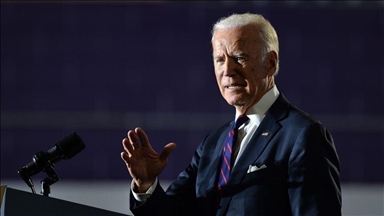Amid South China Sea tensions, Philippines, US, Japan simulate 'anti-terror' action
Trilateral maritime exercise successfully eliminates 'terrorists' possessing weapons of mass destruction

ISTANBUL
A simulated international terrorist group carrying weapons of mass destruction was successfully neutralized by the Philippine Coast Guard (PCG) in a trilateral maritime drill with Japan and the US on Tuesday in the West Philippines Sea.
The PCG personnel intercepted the mock target vessel, the BRP Melchora Aquino, which was referred to as "MV Destroyer" throughout the exercise as "it approached Philippine territory," according to the Inquirer news website.
The scenario involved a firefight between the PCG and the "international terrorists."
Joining the drill were the US Coast Guard's third legend-class cutter, USCGC Stratton, and the Japan Coast Guard's Akitsushima vessel.
The trilateral drill is conducted off Mariveles municipality on the western shore of Bataan province on Luzon Island, which sits at the Philippines' northern end.
The drill came after the US and Philippines discussed plans in April to hold combined maritime activities with "like-minded" partners in the disputed South China Sea.
In April this year, the Philippines and China were engaged in a maritime incident.
Manila had accused China of “aggressive tactics” at sea while Beijing claimed Manila’s vessels allegedly intruded into its waters.
On April 23, two Chinese Coast Guard vessels had intercepted the PCG vessels that were in the vicinity of Ayungin Shoal.
However, Beijing said it was a "premeditated and provocative action" for the Philippine vessels to barge into the waters off the Ren’ai Reef with journalists on board.
The Philippines won a case in 2016 at a UN-backed arbitration court that invalidated China’s expansive claims in the resource-rich South China Sea.
China and several other regional countries make overlapping maritime claims in the South China Sea, resulting in conflicting situations.
Washington has frequently sailed its warships and flown its fighter jets over the warm waters of the South China Sea under the so-called "freedom of navigation," which Beijing has repeatedly denounced as a violation of its territorial integrity.
China’s assertions are based on its “nine-dash line” – purple dashes on official Chinese maps that denote Beijing’s historical claims in the South China Sea.








